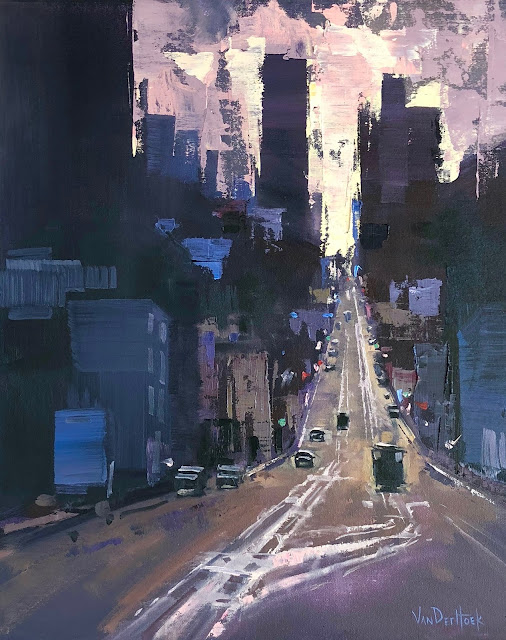Tip Tuesday - Slinging Mud
 |
| "Colorful Vineyard" Oil on 8" x 8" panel. Sold. |
The last 3 Tip Tuesday's have been about mixing paint and in keeping with that same theme today I'll talk about muddy color.
Everyone's experienced this - it's a beautiful day, life is good because you're painting after all, what could possibly go wrong? You've got a solid composition, a lovely subject and your first few paint colors are really working. Then it happens, there is that one tricky color. You know, that elusive one that you just can't seem to nail down? You started off pretty good, two colors got you in the ballpark so you added a third and you suspect that's where you might have made a wrong turn. You think, maybe if you added a fourth color you could save that precious pile of paint and actually apply it to your canvas?
Bam! Mud. Gray, nondescript, boring old mud. You can't use it anywhere! And what's worse, you now have a big pile of it. At this point, I see a lot of students try one more time to save the pile by adding yet another color.
Let it go. Move on. Like a toxic relationship, dump it because if you press on and use the mud it will pollute the whole painting.
Now, I'm not saying there aren't any uses for mud, there are a million and plenty of painters use it to their advantage. If you're wrestling with mud however (now there's a funny mental image), try to keep your paint mixtures simple. Stick to using 2-3 colors only (plus white when necessary). Any more colors than that and you run the risk of muddying the mixture.
Now that I've covered how to avoid mud, in the next post I'll talk about how to effectively muddy a color and why you would want to do that.


Comments